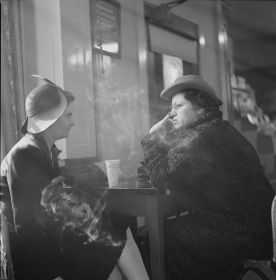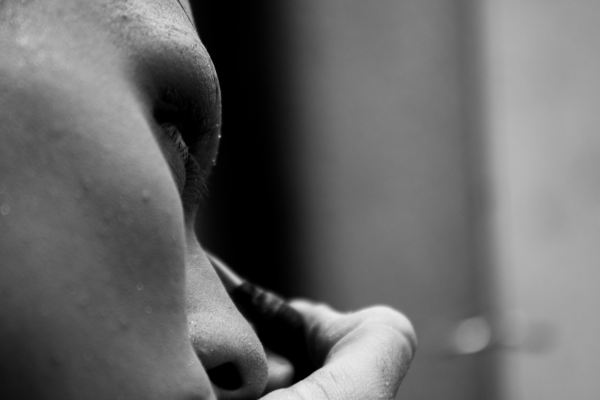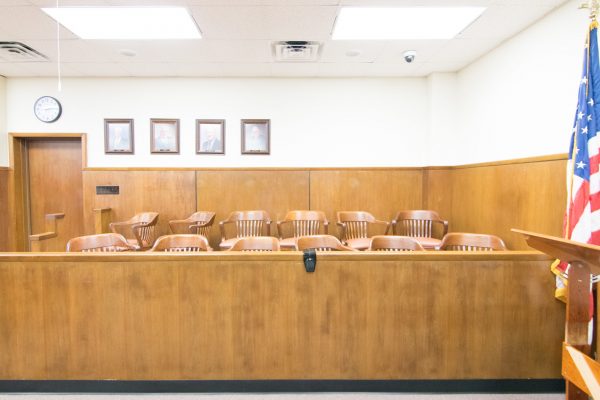One of the major changes in American life about 100-120 years ago was the domestication of public spaces, particularly in our cities, making them places where “respectable” women went shopping and for entertainment. As described in an earlier post, the streets were historically dangerous places for women, even in daytime. Beginning after the Civil War and accelerating around the end of the century, authorities established dependable public order in many areas of the cities, especially in commercial districts, to the point that going downtown rather than avoiding it was what fashionable middle class women did. (Americans went through another cycle of shunning public spaces in the 1950s to ‘90s and then flocking back to them more recently; see here.)
Two just-published papers reveal yet more of how women claimed urban spaces in the late nineteenth and early twentieth centuries. One describes how middle-class women came to drink in public places, getting a bit of alcoholic relief downtown. Another describes women reformers’ efforts to provide public bathroom relief downtown. That campaign stalled and the search for public facilities continues, as witnessed by smartphone apps for finding toilets downtown. Both accounts fill in the story how women tamed the city.
One Kind of Relief
In the 1890s, the Chicago press noticed a trend: middle- and upper-class women drinking in public, downtown. As recounted by Emily A. Remus in the December issue of the Journal of American History [gated] this trend had been growing ever since Chicago’s commercial boom a decade or two earlier, especially with the coming of the department stores. New shopping attractions, easier mass transit, and safer streets brought “armies” of women downtown. The many young women hired to clerk the stores added yet more feminine demand for refreshment. But such women had few places to eat, drink, or rest. Most respectable venues did not allow unescorted women in.
Drugstores were an exception. They served women at their counters and much of what they served were fanciful concoctions or medicinal drinks containing notable amounts of alcohol (or other stimulants). Women could get that refreshing pick-me-up to energize more shopping. The number of drugstores expanded rapidly. So did the number of women’s clubs, many of them in downtown Chicago, which offered alcohol to members. Eventually the stores themselves met the demand. Marshall Field’s opened its “Tearoom” in 1890.
As the drinking became more common and explicit, a reaction set in. It did not come, for the most part, from women in the temperance movement—although crusader Carrie Nation did in the early 1900s confront drinkers in the elegant “Pompeian Room.” The women activists did not care much about genteel drinking and many actually drank; their enemies were saloon drunks. Male activists, however, did care about genteel drinking. According to Remus, they cared because drinking in public violated the woman’s role as the domestic guardian of family virtue. In 1903, a clergyman complained that women’s clubs made women forget “babies and home comforts for the intoxicants of club life.” Another campaigner a few years later charged that the woman who drank in public places “thinks it is more laudable to possess the expert knowledge to make a gin rickey than to fry a beefsteak and who thinks babies and housekeeping a drudge and a nuisance.” By the end of the decade, the campaign to drive women out of alcohol-serving places had lost. During Prohibition, all such places were illegal. But for the long-run, women had grabbed the right to “refreshment” in public spaces.
Another Kind of Relief
For most the nineteenth century, part of the rank and reeking urban experience was the sight and smell of men, and occasionally women, relieving themselves on the streets. Saloons provided one alternative; men could use their toilets, although at the price of a drink. A reform movement, staffed like so many others of the period by middle-class women, emerged to demand decent public toilets. As Peter C. Baldwin tells it in the latest issue of the Journal of Social History [gated], the activists saw such toilets as a means of promoting modesty, morality, health, and, by competing with saloons, sobriety.
In fits and starts – New York built a large facility at Astor Place in 1869 but demolished it in 1872 for being too public, too revealing – large American cities constructed municipal toilets. By 1919, about 100 cities had at least one, some had large ones built underground. The toilets were, however, problematic in many ways. They had to be patrolled and cleaned, so cities found them a large expense. Some, like many in railroad stations, charged for using stalls, but charging left some customers outside. Despite staffing, cleanliness remained a problem, as did illicit activity such as quick sexual exchanges. Women largely avoided the public toilets, even when cities built accommodations to attract them.
Middle-class women instead found relief in private, commercial locations—in hotel lobbies, drugstores, and particularly in the department stores. In 1902, Baldwin reports, even before Chicago had built its first public toilet, “Marshall Field opened a new store with 39 attended restrooms.” Stores provided clean, comfortable, hidden-away “rest rooms” in the heart of the cities. Also critical, middle-class people could meet their bodily needs in such places without meeting many of the lower class.
The public toilet movement largely sputtered out in the 1920s for various reasons—management and cost, competition with private facilities, the general fading of Victorian-era women’s reform movements, and even Prohibition. For many temperance activists, Prohibition meant that men did not have to pass a bar going to and returning from the john, so the urgency of replacing the saloon bathroom passed.
Making urban public spaces welcoming to women was in these two respects provided by private solutions—purchased in some fashion—rather than public solutions.








